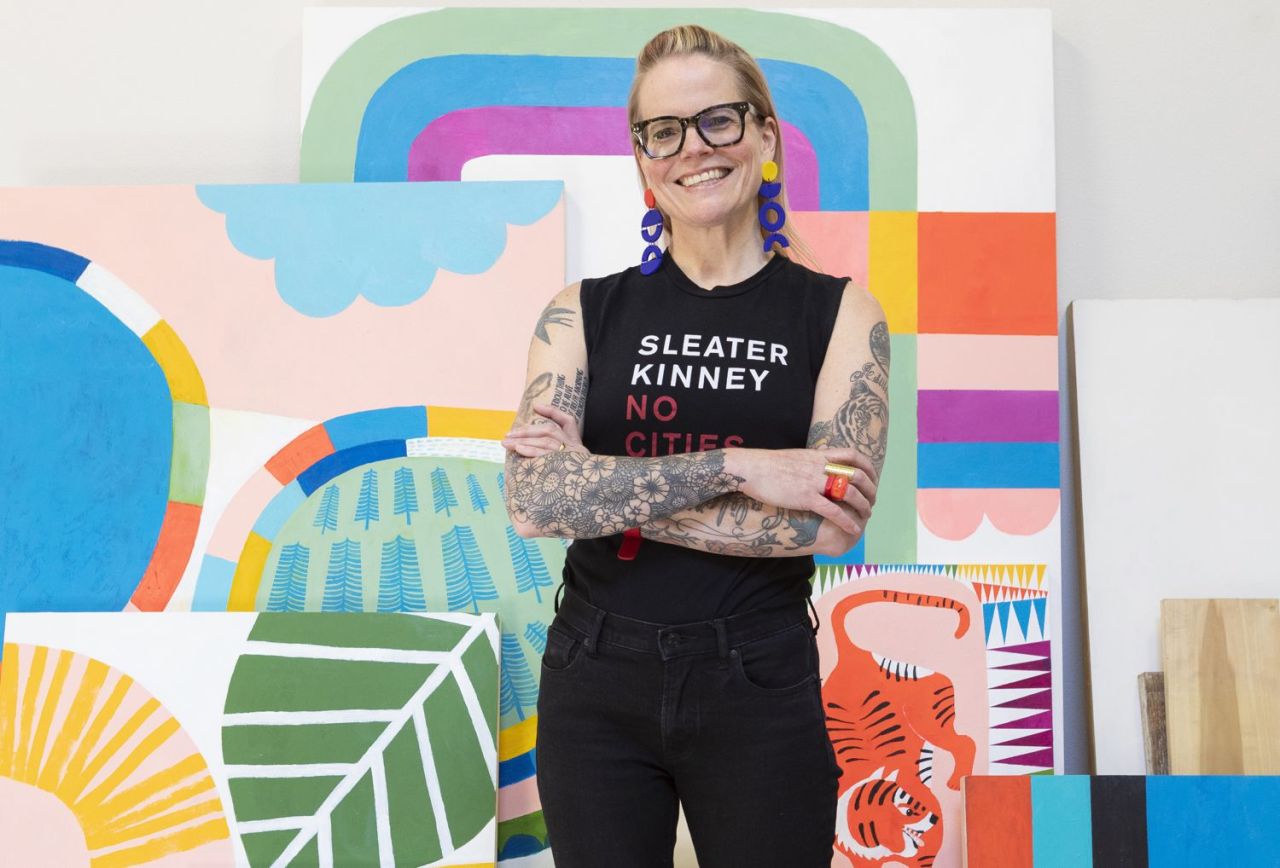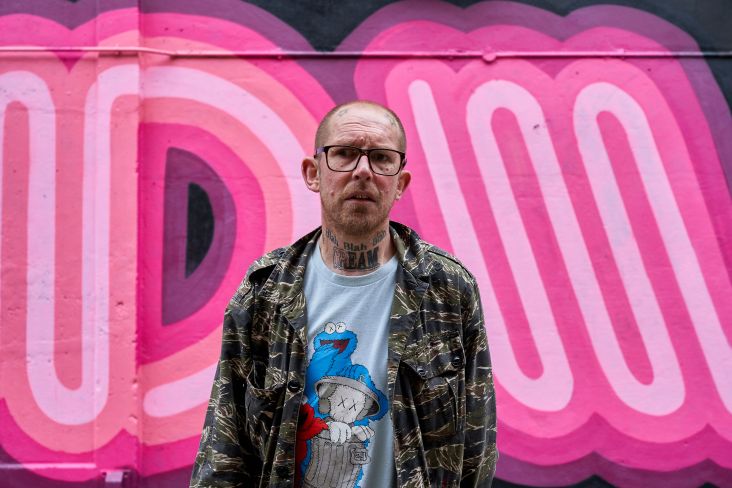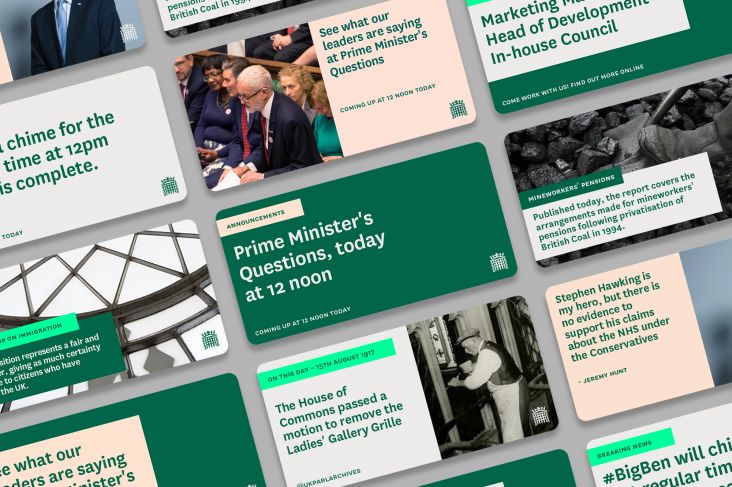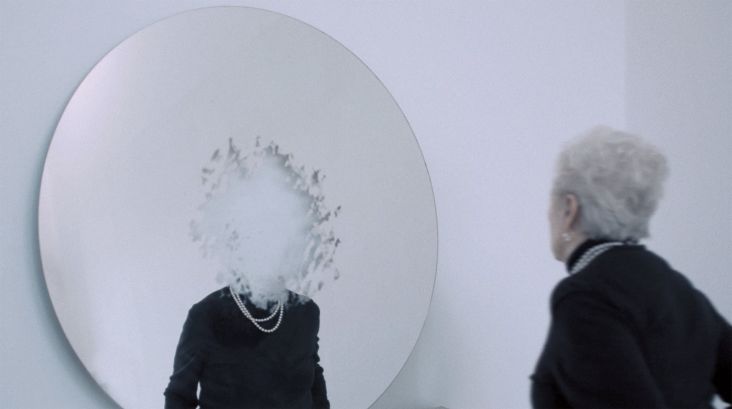An essential guide by Lisa Congdon to help you find your artistic voice
Renowned for her unique colourful paintings and hand lettering, Lisa Congdon is now sharing some of her secrets to success in a new book.

Photography courtesy of Lisa Congdon. © Christopher Dibble
In How to Find Your Artistic Voice: An Essential Guide to Working Your Creative Magic, the Portland-based creative talks about the importance of developing your own style and how it can set you apart.
Lisa has spent many years working hard to get to where she is today. A leading artist, Lisa is known all over the world for her distinctive artworks with clients including MoMA, REI, Harvard University, Martha Stewart Living, Chronicle Books and Random House Publishing, among many others.
She is the author of eight other books, including Art Inc: The Essential Guide to Building Your Career as an Artist, and illustrated books The Joy of Swimming, Fortune Favors the Brave, Whatever You Are, Be a Good One, Twenty Ways to Draw a Tulip and A Collection a Day.
And her latest book, out 6 August, hopes to share some of her success with the creative community. Here, we share some of her essential tips to help you figure out your own artistic voice.
Why conformity is for the birds
We all want to "fit in". It's human nature to want to be accepted and loved by our peers. But when it comes to being creative, we have to find a unique style – one that is true to ourselves and our creativity. Not just because this is where we're most likely to produce our best work but because we need to stand out and be defined and recognised by our style.
"The process of finding your voice is like uncovering your superpower. Your artistic voice is what sets you apart and, ultimately, what makes your work interesting, distinctive, worthy of discourse, and desired by others," writes Lisa. "No matter your medium or genre, having your voice is the holy grail."
You can't copy others; only be inspired. You have to ignore what other people are doing and listen to your heart. So how do you find it? How do you avoid conformity? This is a process that only you can go through. What works for someone else won't necessarily work for you.
Speak your truth
"Your artistic voice is your point of view as an artist. It includes your particular style – things like your own colour palette, symbols, lines, and markings – your skill, your subject matter, your medium, and the consistency with which you use all of these things," adds Lisa. "It reflects your unique perspective, life experience, identity, and values, and it is a reflection of what matters to you.
"Ultimately, it’s what makes your work yours, what sets your work apart, and what makes it different from everyone else’s—even from artists whose work is similar. Your voice is formed over time through continuous experimentation and intentional practice, and from following spurts of inspiration and intuition down long paths of development."
How do you find your "truth"? By understanding the major elements of artistic voice: style, skill, subject matter, medium, and consistency.
Find your style
The elements of style can be summed up by line, shape, layering, colour, texture, composition, rhythm and movement, pattern and repeating imagery. The trick is to uncover where you stand with each element and then be consistent with them throughout your work.
"While most of these elements of style are going to be repeated throughout all of your work, it’s also true that you may, like many artists, have more than one style," says Lisa. "Some artists make both representational and abstract work. Others make some work that is flat and graphic in style and also work that is more layered and intricate. Having one style is not important. What is important is that you use the elements of style consistently within each of your artistic styles."
Focus on building skills
"Skill is an essential element of artistic voice. With greater skill, you’ll create richer and more visually complex work, and you’ll have a much easier time communicating your ideas or emotions through visual imagery," writes Lisa.
How do you build your skills? Lisa believes it takes ten steps: Begin, practice, keep showing up, practice some more, stretch yourself, practice, practice, note your improvements, practice more, repeat.
"If you are self-taught, you can be just as skilled at making art as someone who has had years and years of schooling," adds Lisa. "Your skill is simply in what you do, and not necessarily in traditional techniques. Of course, having skill doesn’t mean you won’t ever make bad work or create a disaster. Experimentation and failure are part of the creative process for everyone."
Consider your subject matter
"For some artists, the subject matter is the most significant aspect of their voice," writes Lisa. "To most of us who make even vaguely representational works, it’s often the defining marker of our voice. What we choose to make a critical part of our expression of our own truth is what we find beautiful or repulsive, interesting or meaningful."
Of course, the subject matter can be landscape, narrative scenes, objects, and so on, but it's more than that. It's about our personal experiences in life, what surrounds us and influences us.
Lisa continues: "Our education, native country, political affiliation, sexual or gender identity, culture, religion, race, ethnicity, sense of privilege (or lack of). Our choice of subject matter is influenced by our sense of morality, our values, and our ideas about what is right and wrong. It’s influenced by what we find beautiful or fascinating or even repulsive."
Look at your chosen medium
According to Lisa, your artistic medium is another part of your voice. "The word 'media' is the plural form of the word 'medium'. Your media are the substances and tools you use to give expression and form to your voice: things like paint, graphite, textiles, ink, paper, wood, clay, and the like," writes Lisa. "Typically, you choose a medium or combination of media because you enjoy working with them, and they most effectively express what you are trying to communicate."
Lisa believes your chosen media will influence your style and the mood in your work. It will help you develop and find your artistic voice.
"A medium can be anything. Most artists use what we call 'traditional' media like paint, paper, or clay," Lisa adds. "But many artists use nontraditional media like discarded clothing, chewing gum, or even human hair! New forms of three-dimensional art like assemblage, installation, and performance art are entirely media-driven. In performance art, the artist’s own body is the medium. Even categories of traditional media are diverse."
No matter what you do, be consistent
"A key component of voice is consistency," writes Lisa. "Consistency is another way of saying that you repeat elements within and among your works: similar subject matter, the same media, and elements of style like colour, pattern, lines, and markings. As such, your work is identifiably yours.
"When you settle in on a set of elements – things like style, subject matter, and medium – you make work that follows a set of unwritten rules: consistent use of positive and negative space, a consistent colour palette, subject matter themes, consistent lines and shapes."
Essentially, the "consistency in your work is the ultimate expression of your voice".
Consider your story
"Your creative voice is your superpower," writes Lisa. "When you have developed your voice, you have the power to create – even under pressure – along with the power to influence others and the range and flexibility to express your own point of view with dexterity."
But it's more than that. "Your voice is your story and your story matters," adds Lisa. That's because you need to connect with your audience. Your creativity has to have 'meaning' that people can relate to. It's also about expressing who you are to the world: "One of the greatest things about making art – and about finding your voice as an artist – is that it gives you a channel to release what’s inside of you."
For your own story, what could you draw upon? Lisa gives some examples: Loves, regrets, truths, obsessions, identity, culture, lessons, memories, differences, morals – these are just some ideas to help you get started.
Understand that finding your voice helps you to survive
"If you have, or aspire to have, a career as a professional artist, your voice is going to be your very best friend in that endeavour," writes Lisa. "While having a strong artistic voice alone doesn’t ensure professional success (things like your desire and your ability to work hard to promote your work, meet deadlines, and effectively manage your time also matter), your voice is a necessary element toward sustaining your artistic career. It’s what sets you apart from other artists, which allows others to connect with your work and to find enough value in it to purchase it or pay you to make more of it."
If you want to be professional and enjoy ongoing commercial success, then you have to rely on this cycle over and over again. "Demand for your work is essential to sustain a career, and a strong voice is an essential element in the formula for the sustainability of a professional career," adds Lisa. "The stronger and more distinct your artistic voice, the more likely you will seize opportunities like gallery shows, grants, residencies, illustration gigs, licensing agreements, and sales of both original art and products."
Ignore fads and trends
"If your work gets stuck in a trend that has been dead for a while or your work changes only when trends shift, it will inevitably fall flat," writes Lisa. "More importantly, making work that only mimics external market trends will, over time, most likely leave you feeling bored and uninspired. I know this from personal experience."
What's more, "Making only work that you think will please your followers or sell or that follows trends or emulates just one artist isn’t just potentially detrimental to the sustainability of your art, it’s simply less satisfying. Diving into your own interests and fascinations will not only keep you more engaged in your work, but it will also increase the likelihood that your work will stand out as different."
When the going gets tough
We all have days when we feel uninspired and bored. Those moments can hamper our push to find our creative voice. When it gets hard, Lisa recommends we don't stop but keep going.
"The process of creating almost anything (and not just paintings) has a messy period where things feel like they are falling apart and we want to rip up the piece and throw it in the trash. But if you can work through that period, you are more likely to make a more refined, more complex piece of art in the end. Working through is essential to finding your voice. So get comfortable with feeling frustrated and keep going. It’s part of being an artist."
How to Find Your Artistic Voice: An Essential Guide to Working Your Creative Magic by Lisa Congdon is out on 6 August 2019, published by Chronicle Books.




 by Tüpokompanii](https://www.creativeboom.com/upload/articles/58/58684538770fb5b428dc1882f7a732f153500153_732.jpg)

 using <a href="https://www.ohnotype.co/fonts/obviously" target="_blank">Obviously</a> by Oh No Type Co., Art Director, Brand & Creative—Spotify](https://www.creativeboom.com/upload/articles/6e/6ed31eddc26fa563f213fc76d6993dab9231ffe4_732.jpg)

















